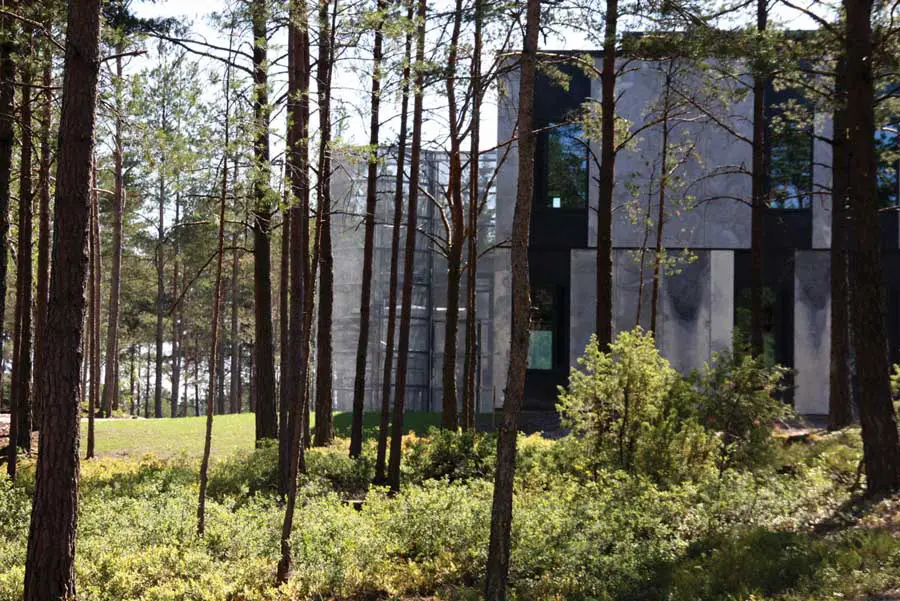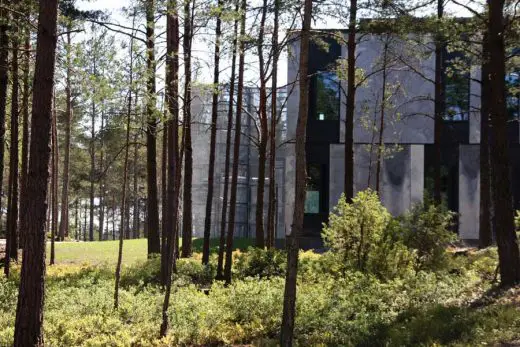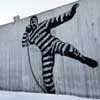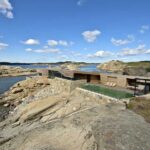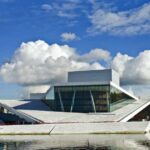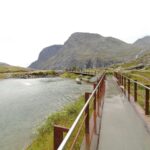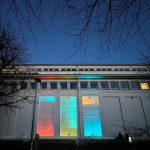Halden Prison Noway, Norwegian penitentiary building Project News, Nordic jail design images
Halden Prison, Norway
Norwegian Government Building Project design by Erik Møller Arkitekter / HLM Arkitektur
9 Aug 2010
Location: Norway
Architects: Erik Møller Arkitekter / HLM Arkitektur AS, Norway
Halden Prison – the most humane jail in the world
Halden Prison Building
“I’ll have both, please.” This was the motto for the Halden Prison competition. The concept is based on the contrasts between hard and soft, precise and organic, punishment and rehabilitation.
Norway focuses intensely on ensuring that ”doing time” is done in a dignified way, and inmates’ sentence should be a dress rehearsal for living a life without crime once they have completed their sentence. The physical setting around the prison in Halden therefore underpins a focus on rehabilitation rather than punishment and supervision.
Time and serving time
Serving a sentence is a fixed-term detention. A former inmate describes his stay in prison as a spell in a diving bell, divorced from time and place. Time and thoughts about time have therefore been an important aspect in developing the prison in Halden, and our intention has been for the inmate to nurture a relationship with time and place.
Nature has made its home in the grounds, and nature in the precise form of a Scandinavian forest showcases the rhythm of the year and imparts changing colours to time. The loveliest landscaped space on the plot, an 8 m high rock wall, has seminal significance in the facility. This is designed to date and locate the inmates’ stay, and provide inspiration for reflection and absorption. The facility has been organized so that inmates will be able to wander through a landscape – “the time it takes” and the experience it affords are key to the rehabilitation process.
In order for the facility to deliver on the intention of variety-filled imprisonment, each of the buildings has been given its own look and material. Depending on the level of security, the facades alternate, from untreated wood to very dark brick – colours and materials reiterated in the area’s rocks and vegetation. The buildings have been constructed from nature’s own materials: tiles, bricks, untreated wood and galvanized steel. Simple monolithic shapes contrast with the landscape’s magnificent trees and undulating woodland floor.
Each of the prison’s individual functions is sited in a building of its own on the hilly, wooded plot. The buildings are interconnected by a one-way ring road that connects and collects, just as the changeable forest stand creates a link between the individual functions.
Located just inside the prison entrance gate are the administration and arrivals building. People can come and go here, and easily get hold of a liaison officer without coming into contact with inmates and disrupting the prison’s daily routine. This is also where the prison’s staff check in and change.
The cultural centre and activities house
After the administration and inner gate, you are met by the central sports area with its “cultural centre”. To the east the sports area is delimited by the landscape’s characteristic steep rock walls, which form a boundary with an area of dense woodland. The Cultural Centre houses a sports hall with a stage, among other things, and a beautifully appointed “sacred space”. This sanctuary is decorated without religious symbols in order to cater for the cultural diversity in the prison. A “firmament” of glass bricks in the south-facing bricked facade and an east-facing end-wall with light art form a space around an arrangement with rows of benches, movable or stackable, as required. The exit from the east glass facade of the sanctuary leads to an area appointed with granite benches that appeal to outdoor gatherings up the rocky slope.
Between the Cultural Centre and the Activities House the patio narrows into a street proper. The bricked facade of the Activities House is divided up by timber-clad sections marking the entrances and at the same time the boundary between wings of the building.
Inside the building the migration of the light is accentuated by the position of the windows and the rooflights, which attempt to bring the landscape into the rooms. Entrance to the teaching room and workshops is through generously overlit corridors, where the long shadow falls onto the floor and walls, supplementing the view out towards the rocks at the end of the corridor with a glance of the sky and the warmly glowing wooden facade of the penthouse. Barred windows are nonexistent – even elsewhere in the prison. Security is guaranteed by the use of safety glass, surveillance of outdoor areas and the 1.5 km long in-situ cast concrete walls. The break room in the Activities House affords access to individually styled exercise yards, all different. The facility has more than 20 different yard space designs.
The residential units
On the east part of the plot – just under ten metres above the other building work – are the prison’s residential units, surrounded by woods with a view down towards the other facility. The facades reflect the underlying functions – brick facade and galvanized steel plates are varied by the large glass sections of the communal rooms.
The appointment of the cells takes the dorm room as its model, with specially designed furniture and en-suite bathroom/toilet. Attached to each group of 10 cells is a shared kitchen and a common room with a TV. All common rooms feature individual artistic decoration. In the kitchens the inmates cook their own food, clear and wash up– often in teamwork with the staff. The emphasis is on interaction between staff and inmates, making the staff natural role models who can support and motivate the inmates to develop daily routines and rhythms reminiscent of day-to-day life outside of prison walls.
Guest quarters
Slightly segregated in the south of the plot is the so-called guest house – the building where inmates can receive visits from family and children. The building is made completely from untreated wood, and with its little garden and its position thus makes one think of ordinary Norwegian mountain huts. The institutional flavour has been toned down further still here in order to give family and children an opportunity to be together with the inmate in as natural an environment as possible.
Halden Prison images / information from FD
Location: Halden, Norway
Prisons Designs
Modern Prison Buildings
Storstrøm Prison, Blichersvej, Gundslev, Falster, Denmark
Design: C. F. Møller Architects
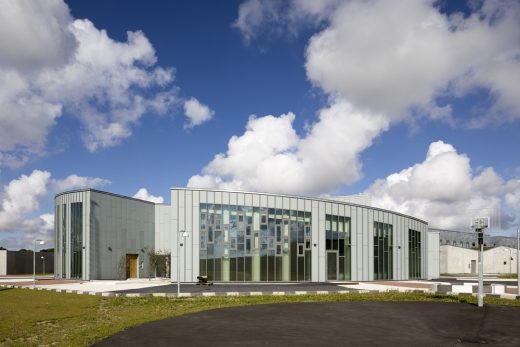
photo : Torben Eskerod
Storstrøm Prison on Falster
Ny Anstalt Correctional Facility Building, Nuuk, Greenland
Design: schmidt hammer lassen architects with Friis & Moltke
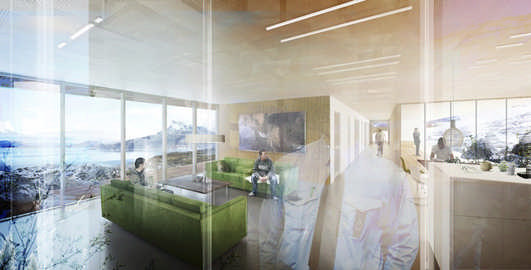
image from architects
Greenland Correctional Facility Building
Holmsheidi Prison Building, Reykjavik, Iceland
Design: Arkis Architects
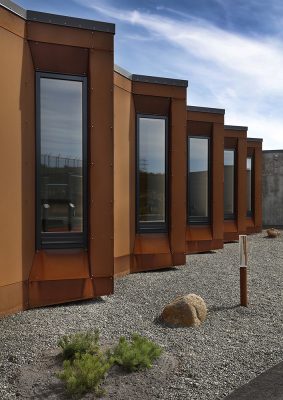
photo © Hreinn Magnusson
Holmsheidi Prison Building
Switching Prisons Design Competition, The Hague, Holland
Architects: NBRS ARCHITECTURE
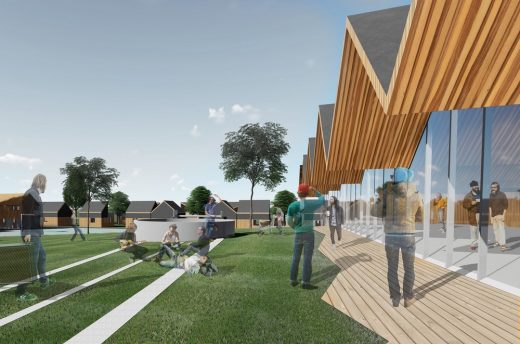
image courtesy of architects practice
Switching Prisons International Design Competition
Norwegian Architecture
Contemporary Norwegian Architecture
Norwegian Architecture Designs – chronological list
Oslo Architecture Walking Tours
Scandinavian Prison Buildings
Holmsheidi Prison Building, Reykjavik, Iceland
Design: Arkis Architects

photo © Hreinn Magnusson
Danish State Prison Building, Falster, Denmark
Design: C. F. Møller Architects
Greenland Correctional Facility Building, Nuuk
Design: schmidt hammer lassen architects with Friis & Moltke

image from architects
Cabin Inside-Out, Hvaler
Design: Reiulf Ramstad Architects
Norwegian Ski Jump Design
Julien de Smedt Architects
Comments / photos for the Halden Prison Norwegian Architecture design by Erik Møller Arkitekter / HLM Arkitektur page welcome.

